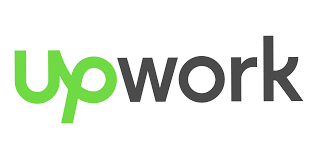How to become a full stack developer?
In the fast-paced tech world of today, it is imperative to comprehend the fundamentals of full-stack development. We'll examine its description in detail as well as the many duties it encompasses and how important it is to contemporary digital experiences. This is where we start our journey towards becoming proficient in full-stack development.
We'll push for a mindset of lifelong learning and stress the importance of drive and dedication. Our goal is to help readers build a solid foundation in programming fundamentals by offering practical techniques.
Mastering Frontend Development:
Essential Frontend Technologies and Frameworks: Explore the fundamental frameworks and technologies that power front-end development. This section covers the essential building blocks of contemporary web development, such as HTML5 for page structuring, CSS3 for styling and layout, and JavaScript for interactive features. We'll also examine well-known frontend frameworks like Angular, Vue, and React.js, offering details on their benefits, capabilities, and best practices for application.
UI/UX Design Principles: With this investigation of UI/UX principles, discover the mysteries of user-centric design. Discover how to design user interfaces that are entertaining and easy to use to improve user experience and increase engagement. This subsection provides you with the abilities and information necessary to create engaging user experiences, from comprehending human behavior to applying efficient design patterns and navigation frameworks. We'll also expose you to resources and techniques for wireframing, testing, and prototyping UI/UX designs so that you can build aesthetically appealing and intuitive online applications.
A Comprehensive Look at Backend Development
Investigate the backend frameworks and technologies that underpin dynamic online applications. This subsection covers the fundamental tools and technologies needed to create reliable backend systems, ranging from server-side scripting languages like Node.js, Python, and Ruby on Rails to backend frameworks like Express.js and Django. Learn how to use databases like MongoDB, MySQL, and PostgreSQL for data processing, retrieval, and storage. You'll also learn best practices for creating scalable and effective backend structures.
RESTful APIs and Microservices Architecture: Learn about RESTful APIs and Microservices Architecture to expand your knowledge about these two fields. Develop your understanding of designing and implementing RESTful APIs to facilitate smooth interaction between front-end and back-end systems. Learn about the fundamentals of microservices architecture, such as orchestration, containerization, and service decomposition, and see how they help modern web applications become more resilient, scalable, and flexible. We'll also go over best practices for versioning, security, and API documentation, so your backend systems are reliable, safe, and thoroughly documented.
Data Persistence and Database Management:
Database Fundamentals: Examine the basic ideas behind database administration. Examine the distinctions between relational and non-relational databases and gain knowledge of the design and normalisation concepts of databases. Acquire the skill of proficient data modelling to guarantee peak efficiency and expandability for your online applications. This subsection provides all the information you require to handle and manipulate data in a relational database system, from comprehending entity-relationship diagrams to putting database schemas into practice.
Advanced Database Management Systems: We'll get into advanced database management systems in this section, covering a range of subjects such as cloud-based database services, performance optimisation, high availability, scalability, data security, migration and integration, and upcoming trends. We'll also look at SQL and NoSQL databases.
- SQL Databases: Dive into the advanced features and functionalities of SQL databases, including advanced querying techniques, transaction management, and performance optimization strategies.
- NoSQL Databases: Explore the unique characteristics of NoSQL databases, such as schema-less design, horizontal scalability, and eventual consistency, and learn how to leverage them for different use cases.
- Performance Optimization: Discover strategies for optimizing database performance, including query optimization, index tuning, and caching mechanisms.
- High Availability and Disaster Recovery: Learn about techniques for ensuring high availability and disaster recovery in database systems, such as replication, failover clustering, and backup and restore procedures.
- Scalability and Sharding: Understand how to scale database systems horizontally using sharding techniques to accommodate increasing data volumes and user concurrency.
- Data Security: Explore best practices for securing databases, including authentication, authorization, encryption, and auditing mechanisms, to protect sensitive data from unauthorized access.
- Data Migration and Integration: Learn how to migrate data between different database systems and integrate databases with other applications and services using ETL processes, APIs, and middleware solutions.
- Cloud-Based Database Services: Discover the benefits of using cloud-based database services for scalable, cost-effective database management, and explore popular cloud database platforms like Amazon RDS, Google Cloud SQL, and Microsoft Azure SQL Database.
- Emerging Trends: Stay updated on the latest trends and advancements in database management, including blockchain-based databases, graph databases, and time-series databases, and their applications in various industries.
Tools for Collaboration and Version Control:
Essentials of GitHub and Git: With the help of this thorough Git and GitHub guide, discover the power of version control. Discover how to efficiently manage code repositories, work with team members, and keep track of changes to your codebase. The fundamental Git commands and workflows that every developer should be familiar with are covered in this subsection, from setting up a new Git repository to generating branches, committing changes, and merging code. We'll also go over the features and capabilities of GitHub, including as pull requests, issue tracking, and project management tools, which will enable you to improve team collaboration and expedite your development process.
Project Management Tools: With this examination of well-liked project management tools, you can improve your project management abilities. We'll go over the key tools and strategies for organising, planning, and monitoring your development projects, from Jira, Trello, and Asana to Agile approaches like Scrum and Kanban. To guarantee that your projects are completed on schedule and under budget, learn how to use project management software to create and prioritise tasks, set deadlines and milestones, and track progress. In addition, we'll go over how to collaborate, communicate, and work as a team in a distributed development environment so that you may collaborate with stakeholders and team members remotely.
Deployment strategies and practices in DevOps:
The development and operations teams now work together more efficiently thanks to DevOps, which has become essential to modern software development. This results in higher-quality software that is delivered more quickly. The fundamentals of DevOps culture, including as automation, continuous integration (CI), and continuous deployment (CD), will be discussed in this section. We will also explore the use of Terraform and Ansible tools for infrastructure as code (IaC) and talk about cloud-native application deployment methodologies on AWS, Azure, and Google Cloud. We will also discuss containerisation technologies such as Kubernetes and Docker, and how they help to streamline the deployment and administration of applications in various contexts.
Quality Control and Testing: Delivering dependable and error-free software requires efficient testing and quality assurance. This section will address the significance of testing within the software development lifecycle (SDLC) and provide an overview of the various testing methodologies, such as unit, integration, and end-to-end testing. We will explore the techniques of behavior-driven development (BDD) and test-driven development (TDD), and we will present popular testing tools and frameworks like Jest, Mocha, Selenium, and Cypress. In addition, we'll go over best practices for guaranteeing the dependability and quality of your software applications and how to set up automated testing pipelines using CI/CD platforms like Jenkins and GitLab CI.
Take a Look at the Following Job Portals

• RemotePlatz

• Upwork

• Indeed

Conclusion
We've walked you through the complex world of full-stack programming in this extensive tutorial, giving you the information and abilities you need to start this fascinating adventure. You now have a thorough understanding of every facet of the development lifecycle, from front-end and back-end development principles to database management, DevOps procedures, and testing methodologies.
Never forget that your path as a full-stack developer is far from over as you continue to learn and advance. Adopt an attitude of constant learning and development, keep up with emerging trends and technologies, and participate actively in the developer community to share knowledge and perspectives.
